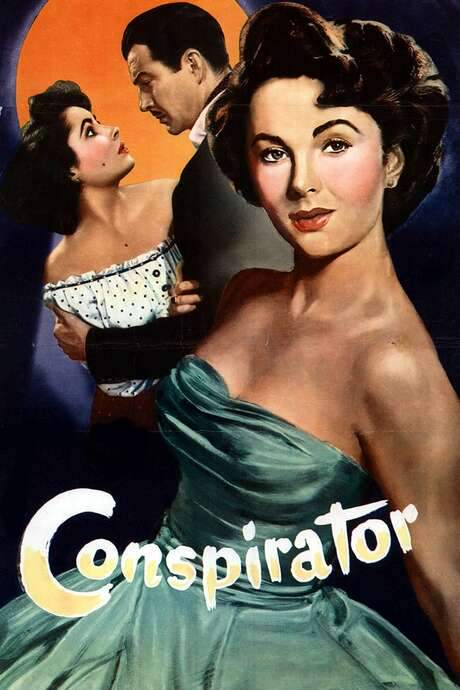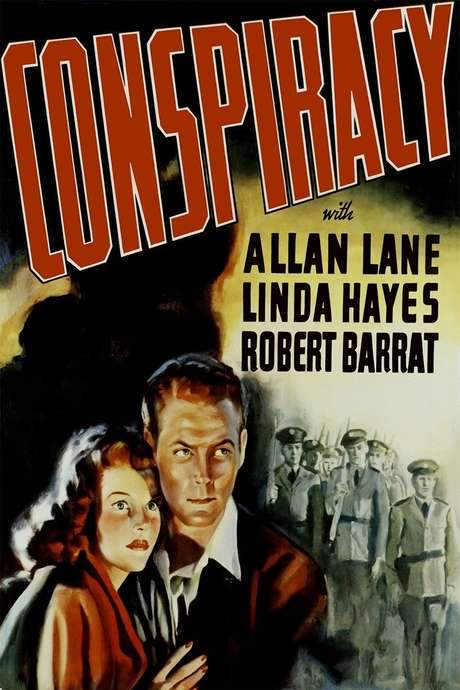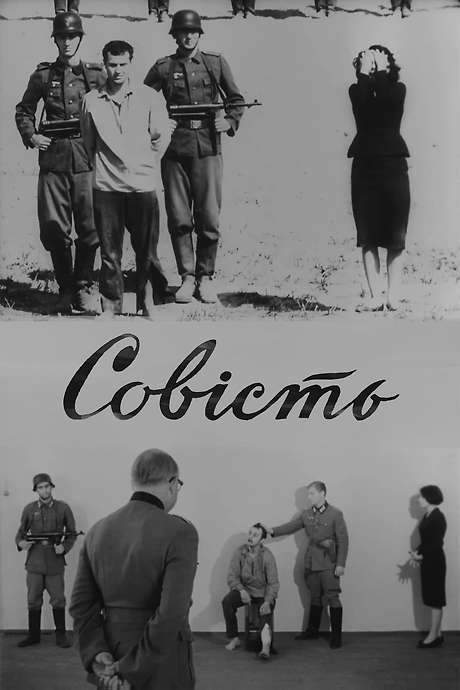
Conspiracy of the Doomed
Year: 1950
Runtime: 97 mins
Language: Russian
Director: Mikhail Kalatozov
Set in an unnamed Eastern European nation, the film depicts a fierce political battle as the government and its opponents clash over whether to accept Marshall Plan assistance from the West or to seal a cooperation treaty with the Soviet Union. The struggle exposes deep ideological divides and the high stakes of choosing the country's future direction.
Warning: spoilers below!
Haven’t seen Conspiracy of the Doomed yet? This summary contains major spoilers. Bookmark the page, watch the movie, and come back for the full breakdown. If you're ready, scroll on and relive the story!
Conspiracy of the Doomed (1950) – Full Plot Summary & Ending Explained
Read the complete plot breakdown of Conspiracy of the Doomed (1950), including all key story events, major twists, and the ending explained in detail. Discover what really happened—and what it all means.
In an Eastern European country recently liberated by Soviet forces from fascism, a new conspiracy begins to take shape. The U.S. Ambassador, Mak-Hill, as the narrative’s bold mastermind, aims to turn the fragile, independent state into the “49th state of America.” He forges a cabal of influential figures who hold the levers of power: Khristina Padera, the Minister of Food; Hugo Vastis, the Minister of Industry and leader of the Catholic Party; Mark Pino, the head of Public Security who later becomes Parliament Speaker; Cardinal Birnch, an agent of the Vatican; and a Chicago journalist named Kyra Rachel who pursues imperialist aims. This coalition, driven by a mix of ideology and personal ambition, sets out to destabilize the nation and erode its sovereignty.
Mac-Hill and Padera orchestrate an economic blockade designed to stage a humanitarian crisis, all the while blaming the Soviet Union for widespread hunger and disguising U.S. involvement as charitable aid. The plot deepens with secret negotiations with the Yugoslav government to intensify the blockade, weaving a web of international intrigue that tests the country’s political nerve. Within this tense climate, the nation’s Parliament becomes a battleground as a vote on the Marshall Plan looms large.
During a furious parliamentary session, the hall erupts over the plan. Nationalists, the Catholic Party, and right-leaning Social Democrats throw their weight behind the Marshall Plan, while Communists, agrarians, and left-wing Social Democrats mobilize against it, bolstered by a massive demonstration that floods the square outside Parliament. The moment captures a country divided, yet resolute in exercising its sovereignty.
As the pressure mounts, Mac-Hill pursues a more drastic path. He solicits military intervention and attempts to bring Tito’s Yugoslav forces into play to lead a southern invasion, with U.S. backing. The country braces for a crisis that could redraw the regional map, testing loyalty and resolve across political lines.
Nevertheless, resistance coalesces. Communist Party activists, joined by left-wing Social Democrats and agrarian leaders, rally workers, peasants, and partisans to thwart the coup. Among the key figures in this grassroots defense are Hanna Lichta and Maks Venta, who help organize an enduring network of opposition, while Ganna Likhta and other steadfast allies keep up pressure from within the capital. The movement draws strength from a broader coalition, including the labor and agrarian sectors, as it counters the conspirators’ every move and sustains public support.
In a decisive turn of events, the coup is defeated. The conspirators, including Cardinal Birnch and Kyra Rachel, are arrested, and Mac-Hill is expelled from the country. With the Communists firmly in power, a delegation travels to Moscow to sign a Treaty of Friendship and Mutual Assistance with the USSR, signaling a new alignment against what they frame as imperialist threats and marking a pivot toward a security-and-prosperity strategy rooted eastward.
Addressing the nation in the wake of these events, the speaker of the new order—a voice that embodies the movement’s energy—declares a historical pivot and reaffirms the country’s resolve to chart its own course. The country’s future, still unfolding, looks eastward as it seeks security, unity, and sustained growth.
“Dear brothers and sisters, Generalissimo Stalin has helped us!”
Last Updated: October 09, 2025 at 09:29
Unlock the Full Story of Conspiracy of the Doomed
Don't stop at just watching — explore Conspiracy of the Doomed in full detail. From the complete plot summary and scene-by-scene timeline to character breakdowns, thematic analysis, and a deep dive into the ending — every page helps you truly understand what Conspiracy of the Doomed is all about. Plus, discover what's next after the movie.
Conspiracy of the Doomed Timeline
Track the full timeline of Conspiracy of the Doomed with every major event arranged chronologically. Perfect for decoding non-linear storytelling, flashbacks, or parallel narratives with a clear scene-by-scene breakdown.

Similar Movies to Conspiracy of the Doomed
Discover movies like Conspiracy of the Doomed that share similar genres, themes, and storytelling elements. Whether you’re drawn to the atmosphere, character arcs, or plot structure, these curated recommendations will help you explore more films you’ll love.
Explore More About Movie Conspiracy of the Doomed
Conspiracy of the Doomed (1950) Scene-by-Scene Movie Timeline
Conspiracy of the Doomed (1950) Movie Characters, Themes & Settings
Conspiracy of the Doomed (1950) Spoiler-Free Summary & Key Flow
Movies Like Conspiracy of the Doomed – Similar Titles You’ll Enjoy
Cold War (2018) Complete Plot Breakdown
The Concert (2010) Spoiler-Packed Plot Recap
Conspiracy (2001) Detailed Story Recap
Conspirator (1949) Spoiler-Packed Plot Recap
Oratorio for Prague (1968) Movie Recap & Themes
The Conspirators (1944) Film Overview & Timeline
The Concert (1954) Complete Plot Breakdown
Man on a Tightrope (1953) Ending Explained & Film Insights
The Organ (1965) Detailed Story Recap
Conspiracy (1939) Spoiler-Packed Plot Recap
Song of Russia (1944) Full Movie Breakdown
The Confrontation (1969) Ending Explained & Film Insights
The Concert (1962) Complete Plot Breakdown
The Confession (1970) Full Movie Breakdown
Conscience (1968) Ending Explained & Film Insights

















